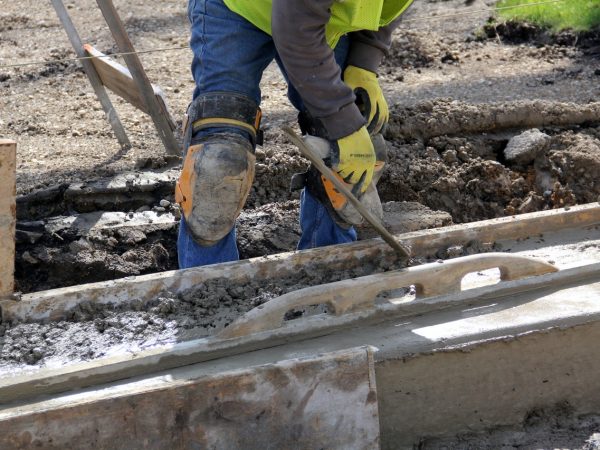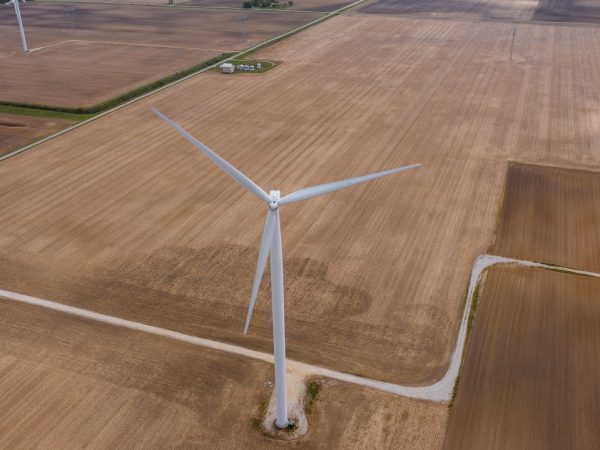In court, property rights are often described using the metaphor of a ‘bundle of sticks,’ with each stick representing a certain property right. Depending upon the project, the government may want to permanently take only a few of your sticks, temporarily use some sticks for a few years, or permanently take all of your sticks. Depending upon the property and project, the result may be that though the government has only taken some of your sticks, it has damaged the majority of your sticks and in turn damaged your property rights.
Rest assured, the Law Office of Bryan P. Lynch, P.C. has successfully dealt with all these types of takings, no matter which or how many sticks the government is trying to take from you.
Partial Takings
There are distinct categories of partial takings, described below, which have a different impact upon your property and upon the amount of compensation you may receive, depending upon the size and scope of the taking.
Partial Fee-Simple Taking
A partial fee-simple taking by the government means that it is seeking to acquire the ownership to a strip or piece of your property for its project, whether for a road widening, road extension, or another municipal project. While the property the government seeks to take may not by itself have substantial monetary value, taking a portion of a property can have a tremendous negative impact on both the utility and value of the land not taken.
The negative impacts can include proximity, grading, onsite circulation, the loss of functional parking, landscaping, or a front yard, triggering zoning issues such as setback requirements, and nonconformities, or requiring the relocation of a sign, fence, well, or septic system. All these issues, and many others, can decrease a property’s value by limiting its utility or functionality and/or reducing the ability to sell the property later. Property owners have a right to also be compensated for these issues, in addition to the value of the property taken.


Temporary Easements
When the government seeks a temporary easement on your property, it typically means that it wants the unrestricted use of the specified section of your property for a period of time, which frequently is five years. The government may use the property for construction, grading, parking construction vehicles, storing materials, and many other purposes. Once the temporary easement is in place, the government will have the right to remove trees, landscaping, or signage, eliminate parking stalls, or excavate asphalt and soil.
The government sometimes even attempts to permanently alter your property. The government also is not required to restore all aspects of your property. It is important to work with a condemnation attorney who will assert your right to full compensation for such damages and compensation so you can restore your property to its original condition.
Permanent Easements
Permanent easements can be extremely invasive and damaging to properties. Permanent easements sought by the government give it the right to use a designated portion of the property forever. Permanent easements may be used for commercial or industrial property where the government does not want to acquire full ownership but wants the permanent and often exclusive use of your property.
Oftentimes, the value of and negative impacts caused by a permanent easement are no different, or worse, than if the government had taken full ownership of the property since the land is permanently encumbered with an easement. Furthermore, the owner often has the burden of continuing to pay real estate taxes on the land in the permanent easement even though the owner has no use or enjoyment of the land.

How Much Compensation Am I Entitled to for the Partial Taking?
It is difficult for a property owner to prevent the government from taking private property. However, every property owner should require that the government follow the law and each step in the condemnation process. If the government fails to do so, then it cannot exercise its eminent domain power to take your property.

The Law Office of Bryan P. Lynch, P.C. will help ensure that the government follows the law, and if the client wishes, challenge the government when it has not followed the law. If the government has followed the law, then the owner’s focus should shift to the valuation of the property being taken. The amount of compensation for a partial taking varies widely, and it depends upon numerous factors such as property location, property type, the use of the land taken, the scope of the project, and the impact upon the property not taken. Valuation of the property and the taking can be summarized as follows:
- Value of property being taken — Fair market value for the property being taken.
- Value of property being used for a temporary easement— Fair market value for the portion of the property being taken on a temporary basis and any diminished value to the property outside the easement.
- Damages to remainder — The loss in fair market value of the remaining property after a piece has been taken. This includes when the damage cannot be repaired, such as when the road becomes closer to the business or home after the taking, or when road construction eliminates parking that cannot be replaced. Damages also includes cost to cure which is the amount of money to repair damages caused by the government such as the relocation of business signage, fencing or utilities, the creation of new parking stalls, restoration of landscaping, or the replacement of a septic system.
Full Takings
If you are a business owner, commercial tenant, or homeowner that has been impacted by an eminent domain or condemnation proceeding, you likely have the right to payment and benefits under the federal Uniform Relocation Assistance and Real Property Acquisition Policies Act of 1970 for the costs of relocating and re-establishing your business or moving your home, which is separate and in addition to the just compensation you may receive for your property. If you are a business owner, the relocation benefits process can be complicated, daunting, and complex. Seek an experienced condemnation attorney like Bryan Lynch, to guide you through the process, and to help you understand and secure the benefits to which you are entitled.
Non-Traditional Takings
- Inverse Taking: Depending on the nature of the taking, you may be confronted with an inverse condemnation case, which means the government took your land without your permission, without a court order, and without payment of compensation. If so, Bryan P. Lynch, an experienced condemnation attorney in Illinois, can help you compel the government to return your land, pay you compensation, and/or initiate proper condemnation proceedings to award you just compensation.
- Regulatory Taking: If the government passes an ordinance or drastically changes zoning classifications, preventing you from using your land consistent with your rights, or improperly denies a certificate of occupancy or business license, then this may constitute a regulatory taking and allow you to force the government to pay you for this taking. Likewise, if the government blocks access to your property or restricts its use, this may be a taking which allows us to institute proceedings to seek compensation for this deprivation.
- Exaction: If the government conditions its approval of certain zoning relief or development entitlements on an owner “donating” a part of their land, then you may be dealing with an exaction issue. We can initiate a mandamus complaint asking the court to force the government to issue the permits, zoning relief or authorization sought as a matter of right, and show that the relief sought, and conveyance of your land, are two separate issues.
Contact an Illinois Eminent Domain Attorney Today
No matter what type of taking, the Law Office of Bryan P. Lynch, P.C. has the experience to handle your case, and we value candor in our assessment regarding the benefit of our representation of your property interests.
Contact us for a free initial consultation or call 312-573-2727.
